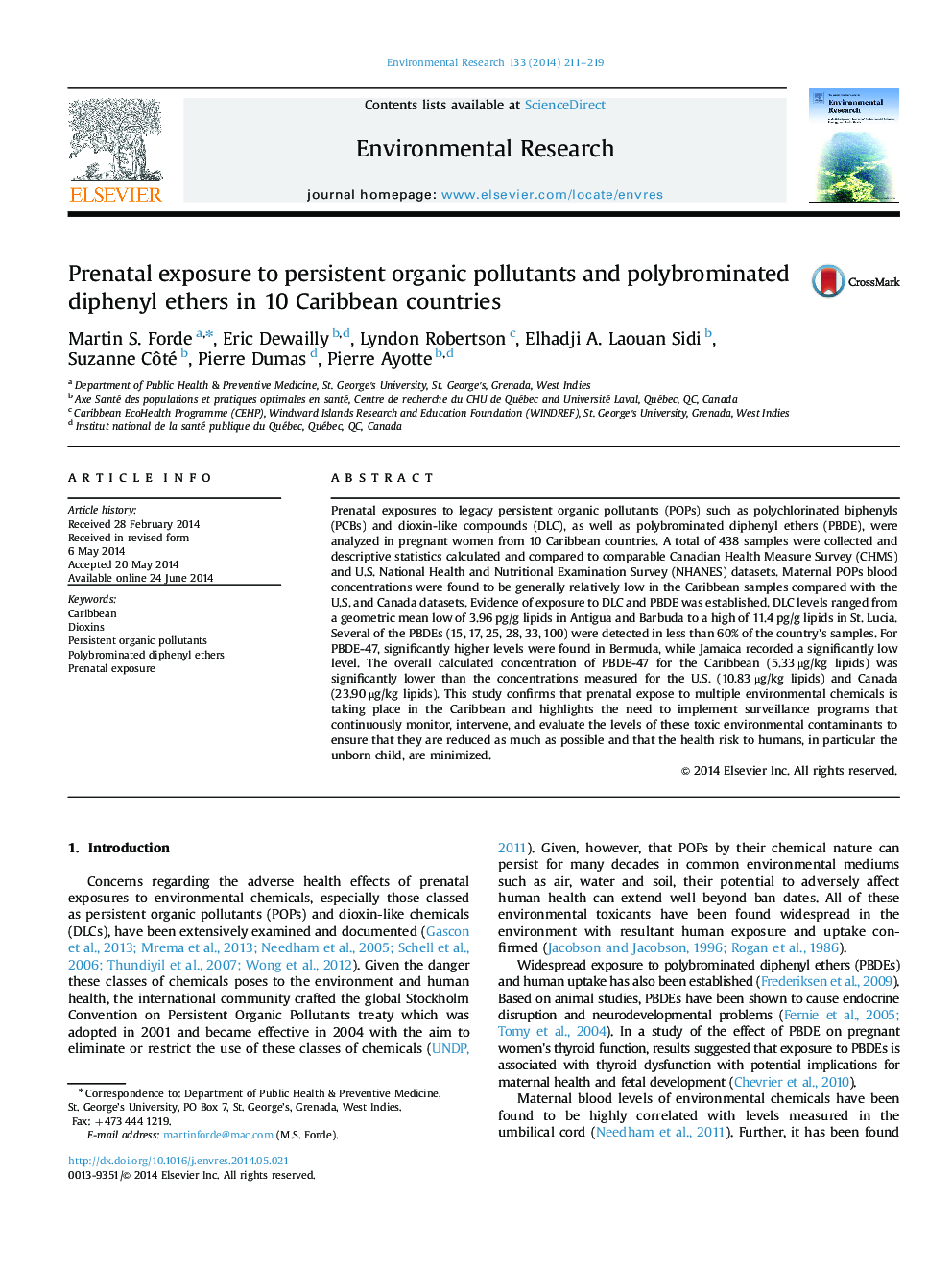| کد مقاله | کد نشریه | سال انتشار | مقاله انگلیسی | نسخه تمام متن |
|---|---|---|---|---|
| 4469732 | 1622568 | 2014 | 9 صفحه PDF | دانلود رایگان |
• Maternal POPs blood concentrations are generally relatively low in the Caribbean.
• Evidence of exposure to DLC and PBDE was established.
• Biomonitoring programs for environmental toxicants are needed for the Caribbean.
Prenatal exposures to legacy persistent organic pollutants (POPs) such as polychlorinated biphenyls (PCBs) and dioxin-like compounds (DLC), as well as polybrominated diphenyl ethers (PBDE), were analyzed in pregnant women from 10 Caribbean countries. A total of 438 samples were collected and descriptive statistics calculated and compared to comparable Canadian Health Measure Survey (CHMS) and U.S. National Health and Nutritional Examination Survey (NHANES) datasets. Maternal POPs blood concentrations were found to be generally relatively low in the Caribbean samples compared with the U.S. and Canada datasets. Evidence of exposure to DLC and PBDE was established. DLC levels ranged from a geometric mean low of 3.96 pg/g lipids in Antigua and Barbuda to a high of 11.4 pg/g lipids in St. Lucia. Several of the PBDEs (15, 17, 25, 28, 33, 100) were detected in less than 60% of the country׳s samples. For PBDE-47, significantly higher levels were found in Bermuda, while Jamaica recorded a significantly low level. The overall calculated concentration of PBDE-47 for the Caribbean (5.33 μg/kg lipids) was significantly lower than the concentrations measured for the U.S. (10.83 μg/kg lipids) and Canada (23.90 μg/kg lipids). This study confirms that prenatal expose to multiple environmental chemicals is taking place in the Caribbean and highlights the need to implement surveillance programs that continuously monitor, intervene, and evaluate the levels of these toxic environmental contaminants to ensure that they are reduced as much as possible and that the health risk to humans, in particular the unborn child, are minimized.
Journal: Environmental Research - Volume 133, August 2014, Pages 211–219
